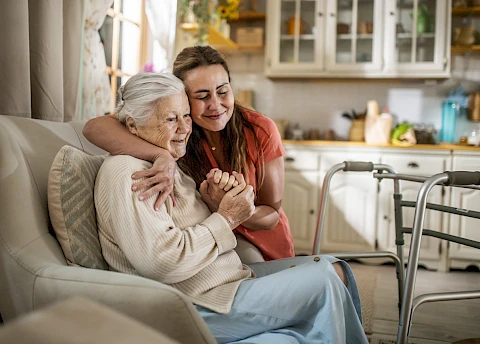
Maintaining good balance matters for seniors, as it lowers the risk of falls and supports independence. Over time, natural changes in strength, vision, and coordination can make balance more challenging, affecting the way daily routines are carried out. These gradual shifts may also limit confidence during movement, which can influence both comfort and overall quality of life.
Breaking Down Balance Issues
Balance challenges can stem from various causes, including aging, medication side effects, or specific health conditions such as inner ear disorders or neurological conditions. Warning signs may include dizziness, feeling unsteady while walking, or struggling to rise from a seated position. Recognizing these signals early makes it easier to address problems before they lead to falls or loss of independence.
Safe Movement at Home
Adapting the home is one of the most effective steps in managing balance difficulties. Begin by keeping each room clear of clutter. Pathways should remain open and free of tripping hazards such as throw rugs or loose cords. Good lighting is equally important—make sure staircases, hallways, and entryways are bright enough to reduce the risk of missteps.
When assessing your home, a room-by-room checklist can highlight areas that need attention. Look for sturdy handrails on stairs, nonslip mats in bathrooms, and chairs with strong armrests for extra support. Even small modifications can greatly increase day-to-day safety and peace of mind.
Maintaining Balance During Daily Tasks
Simple habits help maintain stability during routine activities. When walking, take slow, measured steps and avoid rushing, especially when changing direction or moving from sitting to standing. Use support from walls or solid furniture if needed, making sure what you lean on is secure.
For household chores, divide larger jobs into smaller portions to avoid fatigue and save energy. Try not to stretch or bend too far, as this can throw off balance. Instead, use reachers or other tools designed to make bending and lifting easier.
Exercises to Improve Balance
Regular activity is foundational for maintaining steadiness. Gentle exercises such as leg lifts, heel-to-toe walking, or standing on one foot can be practiced at home. These movements build strength, sharpen coordination, and support confidence. Consistency makes the difference—try to fit balance practice into your week several times. Always check with a healthcare professional before beginning new exercises to follow a plan that matches your needs safely.
Assistive Devices for Balance
Supportive devices can be extremely helpful for improving stability and reducing the risk of falls. Canes and walkers are the most common tools, offering different levels of assistance depending on individual circumstances.
When choosing a cane, make sure it matches your height and has a comfortable grip. Walkers should be sturdy yet easy to handle, with adjustable height and strong handles. Learning how to use these devices correctly is just as important as selecting them, so you can move comfortably and confidently.
Living Safely With Confidence
Managing balance challenges means taking thoughtful steps that promote safety and improve quality of life. Adjusting the home, practicing exercises, and considering the use of supportive devices all help maintain independence while lowering the chance of falls. For personalized care and guidance, contact us at Senior Helpers Blue Ridge. We help seniors in Charlottesville, Harrisonburg, Elkton, Gordonsville, and Crozet maintain comfort and security in their daily lives.